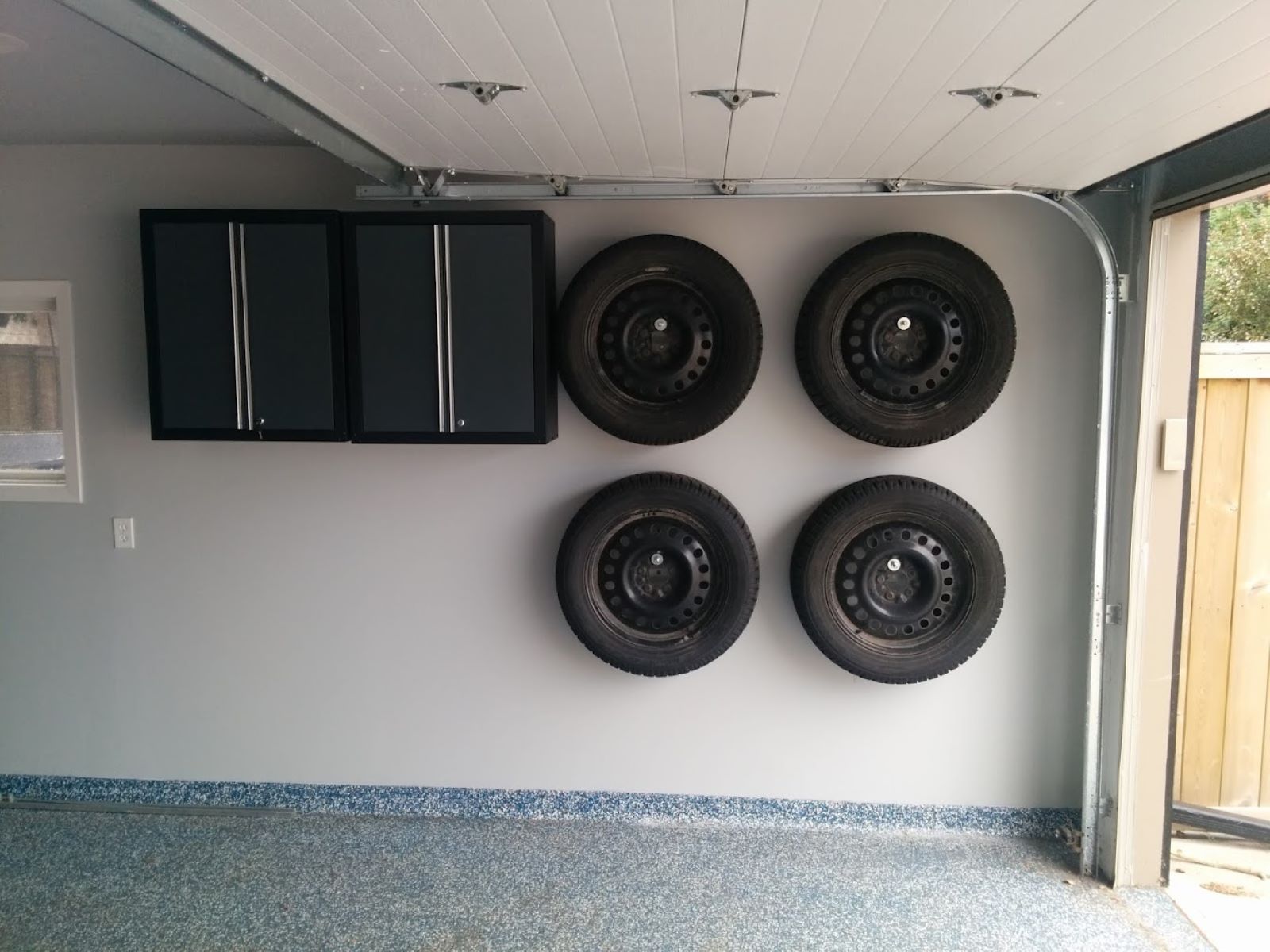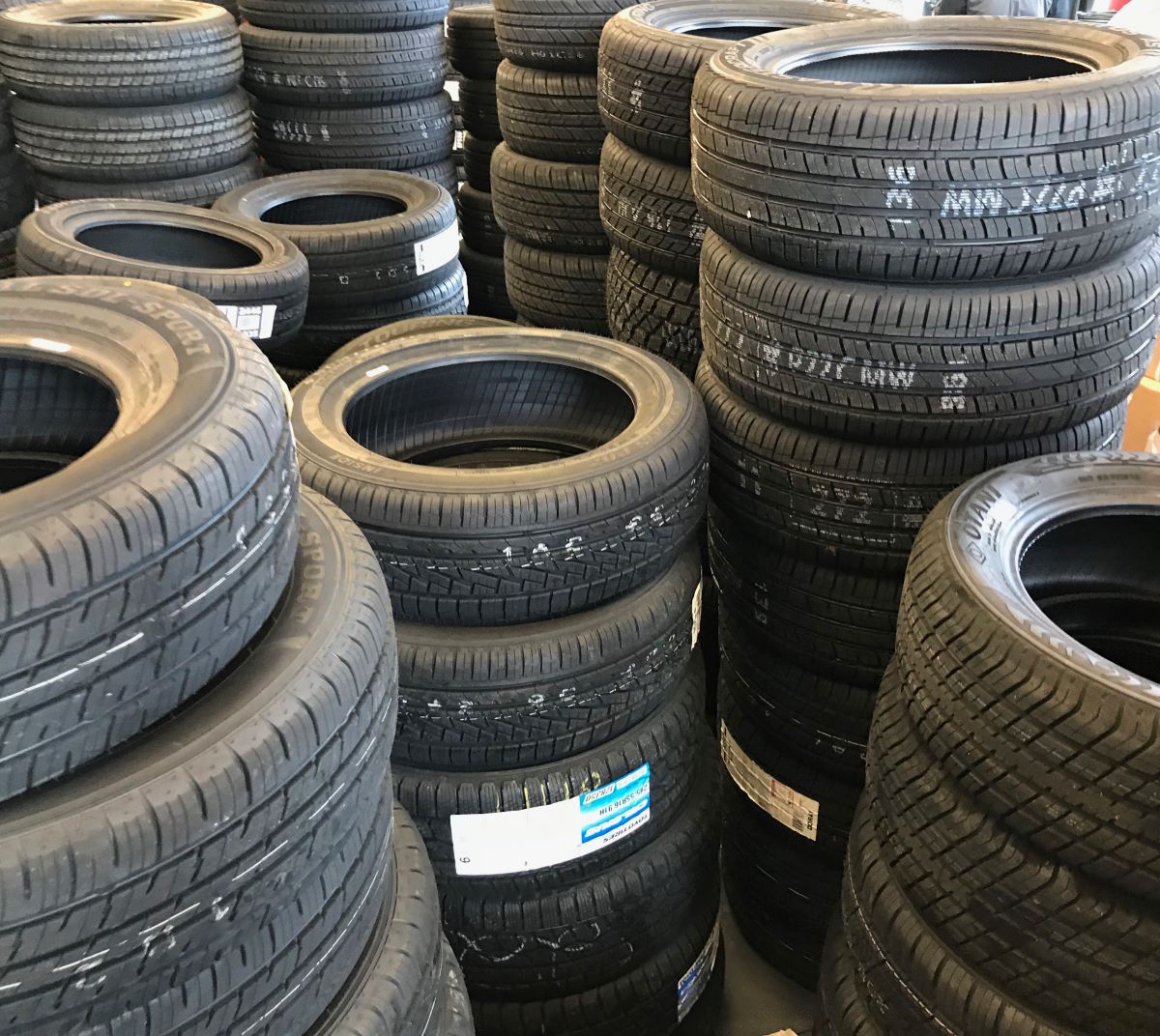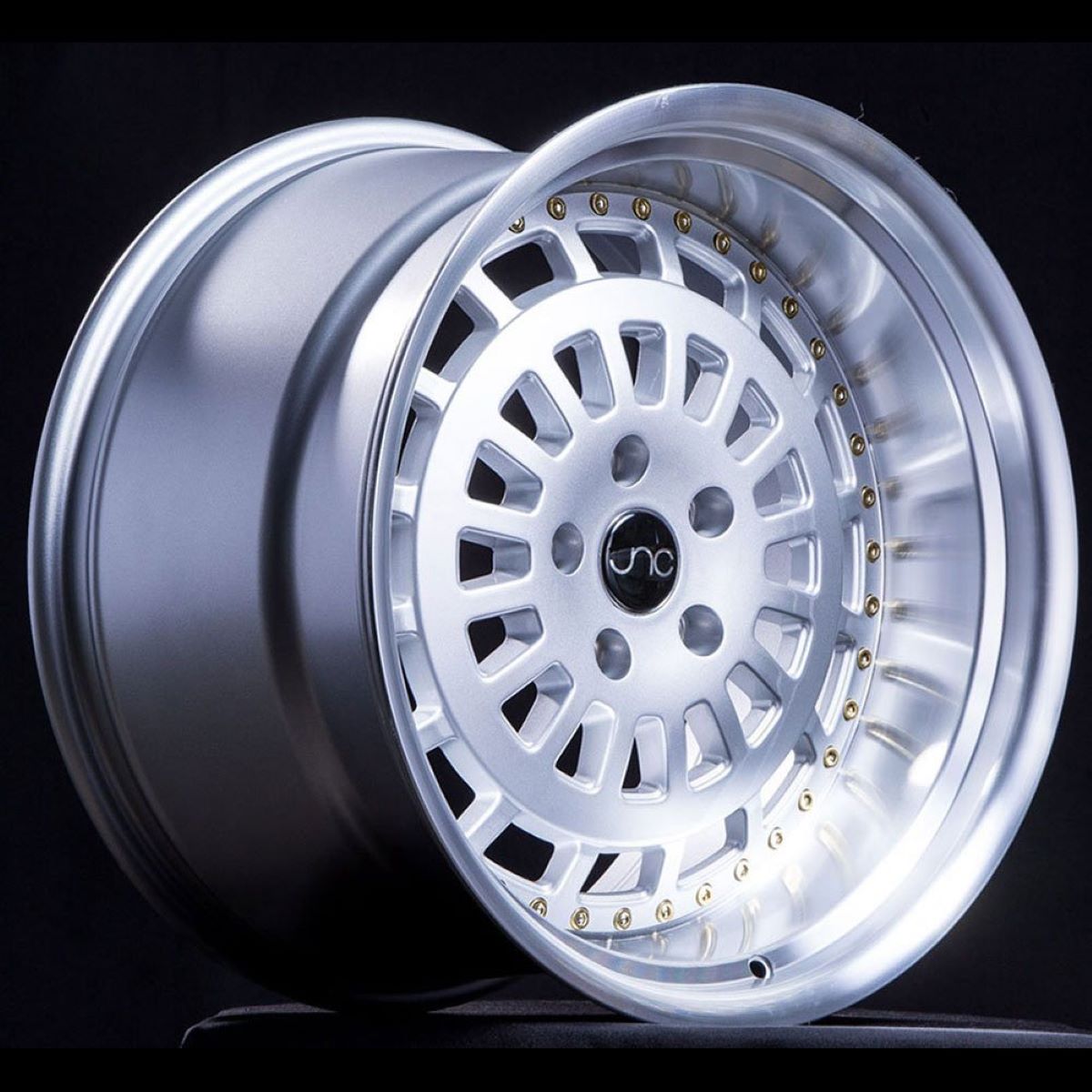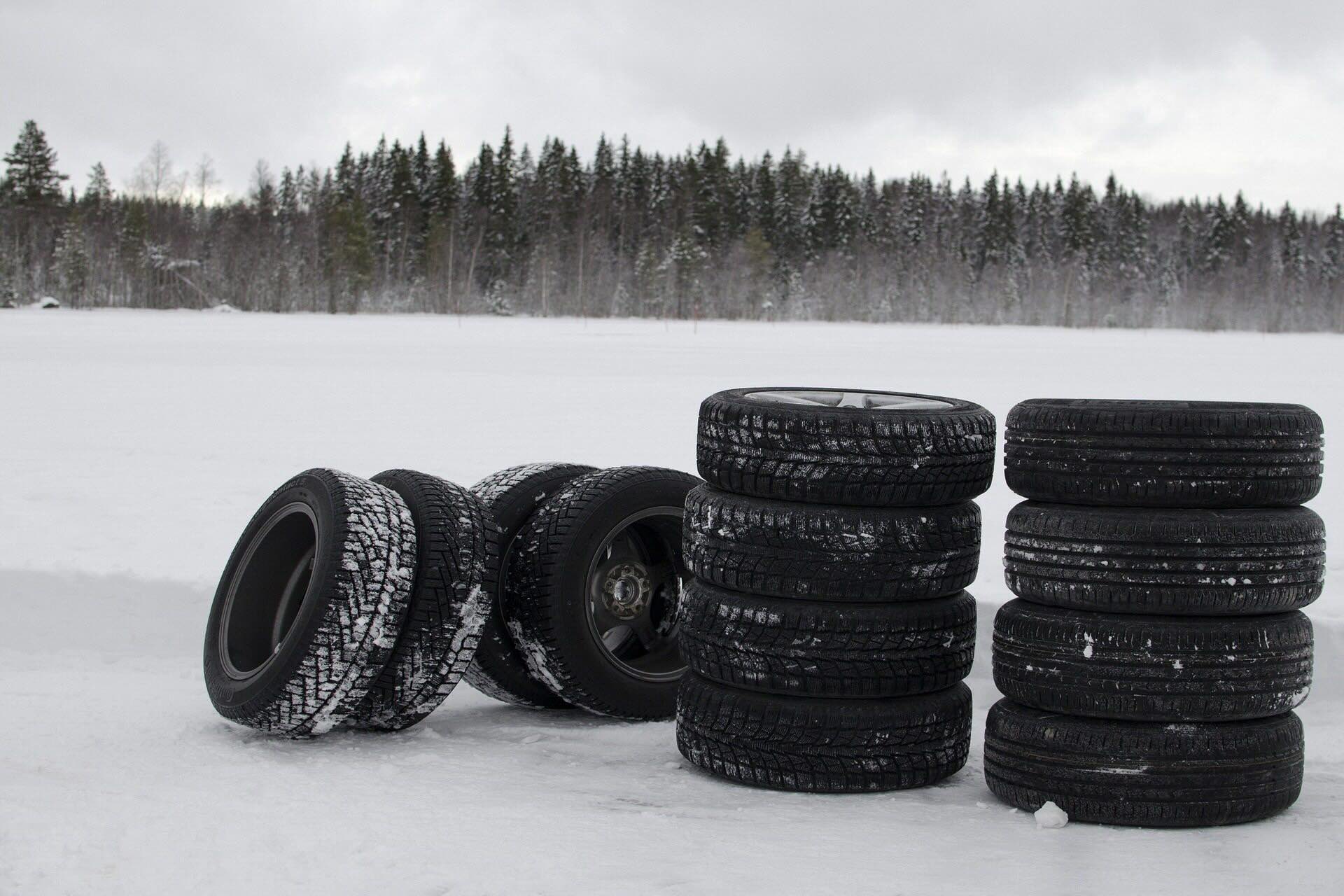

Articles
How To Store Summer Tires
Modified: October 28, 2024
Looking for articles on how to store summer tires? Discover expert tips and guidance on storing your tires properly to extend their lifespan and maintain optimal performance.
(Many of the links in this article redirect to a specific reviewed product. Your purchase of these products through affiliate links helps to generate commission for Storables.com, at no extra cost. Learn more)
Introduction
With the change in seasons, it’s time to say goodbye to those trusty summer tires that have been providing superior performance on the road. But what do you do with them now? Storing summer tires properly is essential for maintaining their lifespan and maximizing their performance when you need them again. In this article, we will guide you through the process of storing summer tires effectively, ensuring that they remain in top condition until the next summer season rolls around.
Why should you bother storing summer tires? Well, summer tires are specifically designed to deliver enhanced traction, grip, and handling in warm weather conditions. Their unique tread patterns and rubber compounds are optimized for dry and wet roads, providing optimal performance and safety during the summer months. However, storing them properly during the colder seasons is crucial to prevent the tires from developing flat spots or deteriorating prematurely.
When it comes to storing summer tires, the location you choose plays a significant role in maintaining their quality. Ideally, you should store them in a cool, dry, and well-ventilated area, away from direct sunlight and extreme temperatures. This can be a garage, a storage shed, or even a dedicated tire storage facility.
Before storing your summer tires, it’s important to clean them thoroughly and prepare them for storage. Start by removing any dirt, debris, or brake dust from the tires using a mild soap and water solution. Avoid using harsh chemicals or abrasive brushes that can damage the rubber. Once clean, allow the tires to dry completely to prevent moisture build-up that can lead to mold or mildew.
Now let’s dive into the various tire storage methods you can use to keep your summer tires in prime condition until they are ready to hit the road again.
Key Takeaways:
- Properly storing summer tires is crucial for maintaining their quality, extending their lifespan, and ensuring optimal performance when you need them again. It saves money and eliminates the hassle of purchasing new tires each year.
- Choosing an appropriate storage location, cleaning and preparing tires, and utilizing effective storage methods are key to preserving the quality and performance of summer tires. Following manufacturer guidelines and additional tips further contribute to maintaining tire integrity.
Read more: How To Store Unmounted Tires
Why Store Summer Tires
Many car owners wonder why it’s necessary to store their summer tires when they can simply swap them out for winter tires and vice versa. However, storing summer tires properly offers several advantages that are essential for their longevity and performance. Here are some compelling reasons why you should store your summer tires:
- Preserve Tire Quality: Summer tires are designed with specific tread patterns and rubber compounds that provide superior grip and handling in warm weather. Storing them properly helps to maintain their structural integrity, preventing them from becoming brittle or developing cracks.
- Extend Tire Lifespan: By storing summer tires correctly, you can prolong their lifespan. Exposure to extreme temperatures and improper storage conditions can lead to premature wear and degradation, reducing the overall lifespan of the tires.
- Save Money: Storing your summer tires allows you to use them for multiple seasons, eliminating the need to buy new tires every year. This can result in significant cost savings in the long run.
- Convenience: Having properly stored summer tires readily available for the next summer season eliminates the hassle of purchasing new tires or having to mount and balance them when the warmer weather arrives.
- Optimal Performance: Storing summer tires in a controlled environment helps to maintain their performance characteristics. Tires stored in the right conditions will provide consistent traction, grip, and handling when you reinstall them on your vehicle.
- Safety: Properly stored summer tires ensure optimal safety on the road. Summer tires are specifically designed to perform well in warm conditions, and by using them as intended, you can have peace of mind knowing that your tires are providing the best traction and control on dry or wet summer roads.
Overall, storing summer tires properly is a wise investment of time and effort. By doing so, you can extend their lifespan, save money, and ensure optimal performance when you need them again. Now that you understand the importance of tire storage, it’s time to explore the various methods and techniques for storing summer tires effectively.
Choosing an Appropriate Storage Location
When it comes to storing summer tires, selecting the right storage location is crucial to ensure their long-term preservation. Here are some key factors to consider when choosing an appropriate storage location:
- Temperature and Humidity: Optimal temperature and humidity levels are essential for tire storage. Ideally, tires should be stored in a cool and dry environment, away from direct sunlight and extreme temperatures. Fluctuations in temperature can cause the tire rubber to expand and contract, leading to potential damage or deformities.
- Ventilation: A well-ventilated storage area helps prevent moisture buildup, which can lead to mold or mildew growth. Good airflow ensures that the tires remain dry and free from moisture-related issues.
- Protection from Light: Sunlight and ultraviolet (UV) rays can cause the rubber to deteriorate and fade. It is important to store tires in a location that is shielded from direct sunlight to maintain their quality and appearance.
- Space: The storage area should have enough space to accommodate the tires without excessive compression or stacking. Stacking tires too high or placing heavy objects on top of them can lead to structural damage or flat spots.
- Cleanliness: The storage location should be clean and free from debris. Dust and dirt can be abrasive and may cause damage to the rubber surface of the tires.
Based on these factors, one of the most ideal locations for tire storage is a cool, dry, and well-ventilated garage or storage shed. These areas typically offer the necessary protection from sunlight and extreme temperatures while maintaining a clean and controlled environment. If you don’t have access to a garage or shed, consider using a dedicated tire storage facility that specializes in providing an optimal storage environment for tires.
Additionally, when storing tires, it’s recommended to elevate them off the ground to minimize contact with cold surfaces and allow for proper airflow. This can be done using tire racks, stands, or wall mounts, which we will discuss in more detail later in this article.
By carefully choosing an appropriate storage location, you can ensure that your summer tires are protected from damaging elements and maintain their quality until they are ready to hit the road once again. With this in mind, let’s move on to the next step in the tire storage process: cleaning and preparing the tires for storage.
Cleaning and Preparing Tires for Storage
Before storing your summer tires, it’s essential to clean and prepare them properly to maintain their condition. Here are the steps to follow:
- Remove Tires from the Vehicle: Start by removing the summer tires from your vehicle. If you have winter or all-season tires that you intend to use during the colder months, now is the time to install them.
- Clean the Tires: Using a mild soap and water solution, thoroughly clean the tires to remove any dirt, debris, or brake dust. Avoid using harsh chemicals or abrasive brushes, as they can damage the rubber surface. Instead, use a soft-bristled brush or sponge to gently scrub the tires and remove any stubborn stains.
- Dry the Tires: After cleaning, allow the tires to dry completely before storing them. You can either let them air dry or use a clean cloth to wipe off any excess moisture. Ensure that there is no standing water or dampness on the tires, as this can lead to mold or mildew growth during storage.
- Inspect for Damage: While cleaning the tires, take the opportunity to inspect them for any visible damage, such as cuts, punctures, or bulges. If you notice any significant damage, it may be necessary to replace the tire before storing it.
- Remove and Clean the Wheels: If your summer tires are mounted on wheels, it’s a good idea to remove them before storage. This allows you to clean both the tires and wheels more thoroughly. Use a wheel cleaner and a soft brush to remove any brake dust, grease, or grime from the wheels. Rinse them thoroughly and dry them before storing.
- Mark Tires: To easily identify your summer tires when you retrieve them from storage, consider marking them with a chalk or tire marker. This will help you keep track of when they were last used and ensure that you rotate them properly for even wear.
By following these steps, you can ensure that your summer tires are clean, dry, and ready for storage. This will help maintain their overall quality and performance during the off-season. In the next section, we will explore the different methods and techniques for storing summer tires efficiently.
Tire Storage Methods
When it comes to storing your summer tires, there are several methods and techniques you can employ to keep them in optimum condition. Let’s explore the different tire storage methods:
- Stacking Tires: One of the simplest and most common ways to store tires is by stacking them. When stacking tires, it’s important to avoid excessive compression or heavy items placed on top, as this can cause damage or flat spots. Stack the tires on a clean, flat surface, alternating their orientation to distribute the weight evenly.
- Using Tire Racks: Tire racks provide an organized and efficient way to store tires. These racks are designed to hold and protect the tires while maximizing storage space. Make sure to choose racks that are sturdy and adjustable, allowing you to accommodate different tire sizes. Positioning the rack off the ground can also prevent moisture buildup.
- Tire Bags and Covers: Tire bags or covers are specially designed to protect tires during storage. These bags provide a barrier against dust, dirt, and UV rays, keeping the tires in optimal condition. Be sure to choose bags that are made of durable and breathable material, allowing for proper ventilation to prevent moisture buildup.
- Tire Stands and Wall Mounts: Tire stands or wall mounts are great options for saving space while storing tires. These storage solutions allow you to hang the tires vertically, keeping them off the ground and protecting them from potential damage. Ensure that the stands or mounts are securely anchored to the wall or floor for stability.
When selecting a storage method, consider factors such as available space, ease of access, and the number of tires you need to store. Remember to always handle the tires with care to avoid any unnecessary damage during the storage process.
In addition to the storage methods mentioned above, it’s essential to implement some additional tips to ensure the longevity of your summer tires during the storage period. We’ll discuss these tips in the next section.
Read more: How To Store Tire Chains
Stacking Tires
Stacking tires is a common and straightforward method for storing summer tires. When done correctly, it can save space and keep the tires in good condition. Here are some tips on how to stack tires effectively:
- Clean the Tires: Before stacking, make sure the tires are clean and dry. Any dirt or debris left on the tires can cause scratching or damage to the rubber surface when they come into contact.
- Alternate Tire Orientation: When stacking tires, it’s essential to alternate their orientation. This means that each tire’s sidewall should face the sidewall of the adjacent tire, rather than nesting one tire inside another. Alternating the orientation allows for better weight distribution and reduces the risk of flat spots.
- Use a Stable Base: Start by choosing a clean and flat surface as the base for stacking. If possible, place a sturdy and non-slip mat or pallet as a foundation. This provides stability and prevents the tires from shifting or tipping over.
- Avoid Excessive Compression: Avoid stacking too many tires on top of each other or compressing them excessively. Excessive compression can damage the tire sidewalls or lead to flat spots. It’s best to stack no more than four or five tires high.
- Do Not Place Heavy Objects on Top: Resist the temptation to place heavy objects on top of the tire stack, as this can cause unnecessary pressure and damage. Instead, leave the top of the stack empty or use a lightweight cover to protect the tires from dust and debris.
- Rotate Tires: If you plan to store tires for an extended period, it’s advisable to rotate the tires every few months. This helps prevent tire deformation and ensures even distribution of weight and pressure.
- Check Tires Periodically: While the tires are in storage, periodically check them for any signs of damage, such as cracks, bulges, or deflation. Promptly address any issues to prevent further deterioration.
By following these stacking tips, you can ensure that your summer tires are stored safely and remain in good condition until they are ready to be mounted on your vehicle again. Remember to handle the tires with care to prevent any unnecessary damage during the stacking process.
While stacking tires is a viable storage method, it may not be suitable for larger quantities of tires or if you have limited space. In such cases, you may want to consider utilizing tire racks or other storage solutions, which we will discuss in the next sections.
When storing summer tires, make sure to clean them thoroughly to remove any dirt and debris. Store them in a cool, dry place away from direct sunlight and sources of heat to prevent damage. Consider using tire storage bags to protect them from moisture and dust.
Using Tire Racks
Tire racks are an efficient and organized method for storing summer tires. They provide a dedicated space to hold the tires securely while maximizing storage space. Here are some tips on how to effectively use tire racks for tire storage:
- Select Sturdy and Adjustable Racks: When choosing a tire rack, opt for one that is sturdy and capable of supporting the weight of your tires. Look for racks that are adjustable in width and height, allowing you to accommodate different tire sizes. This versatility ensures that your tires are held securely and minimizes the risk of them slipping or falling.
- Position the Rack Correctly: Place the tire rack in a cool, dry, and well-ventilated location. Ensure that the rack is stable and securely anchored to the wall or floor to prevent any accidents or toppling over. Keeping the rack slightly elevated off the ground can help prevent moisture buildup and potential damage to the tires.
- Organize the Tires: Arrange the tires on the rack in a neat and organized manner. You can stack the tires vertically on the rack or place them side by side, depending on the design of the rack and the number of tires you need to store. Be mindful of not overloading the rack with too many tires to maintain stability and prevent damage to the tires at the bottom of the stack.
- Label and Rotate Tires: Consider labeling the tires or using a rotation system to keep track of their position on the rack. This will help you maintain an even wear pattern and ensure proper tire rotation when it’s time to use them again.
- Inspect the Rack Regularly: Periodically inspect the tire rack to ensure that it remains in good condition. Check for any signs of rust, corrosion, or structural damage. If you notice any issues, take the necessary steps to repair or replace the rack to prevent any potential accidents or tire damage.
- Utilize Accessories: Many tire racks come with accessories to enhance storage and organization. This may include hooks for hanging wheels or accessories such as tire totes or covers for added protection. Take advantage of these accessories to optimize your tire storage setup.
By using tire racks for storing your summer tires, you can keep them organized, secure, and easily accessible. Tire racks not only save space but also help in maintaining the structural integrity of the tires. However, if tire racks are not suitable for your storage needs, there are other storage methods available, which will be discussed in subsequent sections.
Tire Bags and Covers
Tire bags and covers are excellent options for protecting and preserving your summer tires during storage. They provide a protective barrier against dust, dirt, moisture, and UV rays, keeping the tires in optimal condition. Here are some tips on using tire bags and covers effectively:
- Choose Durable and Breathable Materials: When selecting tire bags or covers, opt for ones made of durable and breathable materials. These materials should allow for proper ventilation to prevent moisture accumulation and the growth of mold or mildew. Avoid using plastic or non-breathable materials that can trap moisture and cause tire damage.
- Ensure Proper Tire Fit: The tire bags or covers should fit snugly around the tires. This ensures that the entire tire is protected from debris and UV rays. Proper fitting also prevents the bags or covers from shifting during storage.
- Clean and Dry Tires Before Covering: Before placing your summer tires into the bags or covering them, ensure that the tires are clean and dry. Any dirt or moisture left on the tires can lead to corrosion or mold growth, so it’s essential to start with tires that are in a clean and dry state.
- Label the Bags or Covers: To easily identify your tires when you need to retrieve them from storage, consider labeling the bags or covers. This can be done using tags, labels, or even colored tape. Labeling helps you keep track of tire position, rotation, and any specific information you may need for future reference.
- Store Bags or Covers in a Clean Location: When not in use, store the tire bags or covers in a clean and dry location. Keep them away from excessive heat or direct sunlight, as prolonged exposure can degrade the material over time. Storing the bags or covers properly ensures that they are ready for use when it’s time to store your tires again.
- Inspect Bags or Covers Regularly: Periodically inspect the tire bags or covers for any signs of damage, such as tears or holes. If you notice any damage, it is crucial to repair or replace them to maintain the necessary protection for your tires.
Utilizing tire bags or covers is a practical and convenient way to shield your summer tires from environmental factors during storage. They not only provide an extra layer of protection but also help keep the storage area clean and organized. Remember to handle the tires with care during the bagging and covering process to prevent any unnecessary damage.
While tire bags and covers are effective storage options, there are other methods and techniques available for storing your summer tires, which we will explore in the upcoming sections.
Tire Stands and Wall Mounts
Tire stands and wall mounts offer a space-saving solution for storing your summer tires. These storage methods allow you to keep your tires off the ground, protect them from damage, and utilize vertical space efficiently. Here are some tips on using tire stands and wall mounts effectively:
- Choose Sturdy and Secure Stands or Mounts: When selecting tire stands or wall mounts, opt for ones that are sturdy, stable, and capable of supporting the weight of your tires. Look for stands or mounts made of strong materials, such as steel or heavy-duty plastic, to ensure durability and longevity.
- Follow Installation Instructions: Read and follow the installation instructions provided by the manufacturer carefully. Ensure that the stands or mounts are securely anchored to the wall or floor, and that they can bear the weight of your tires safely.
- Properly Position the Stands or Mounts: Place tire stands or wall mounts in a convenient location where they are easily accessible. Consider the height and depth of the stands or mounts to ensure they can accommodate your specific tire size.
- Organize and Hang the Tires: Depending on the design of the stands or mounts, hang the tires vertically, positioning them one above the other. Be sure to alternate the tire orientation to distribute the weight evenly and minimize stress on the tires.
- Consider Tire Covers or Bags: Though not necessary, using tire covers or bags in conjunction with tire stands or wall mounts can provide an additional layer of protection. Covers or bags shield the tires from dust, dirt, and UV rays, keeping them in better condition during storage.
- Rotate the Tires: If storing tires for an extended period, consider rotating them periodically, especially if they are on wall mounts. This helps prevent tire deformation and ensures even weight distribution for better tire health.
- Regularly Inspect the Stands or Mounts: Periodically inspect the tire stands or wall mounts for any signs of wear and tear, such as cracks or loosened components. This ensures their continued stability and safety for your stored tires.
By utilizing tire stands or wall mounts, you can optimize space utilization, protect your summer tires, and easily access them when needed. These storage methods not only provide a tidy and organized appearance but also contribute to the overall lifespan and performance of your tires.
While tire stands and wall mounts are effective storage options, there are additional tips and considerations for tire storage that we will explore in the following section.
Read more: How To Store Bike Tires
Additional Tips for Tire Storage
Along with the various tire storage methods discussed earlier, here are some additional tips to ensure the longevity and quality of your summer tires during storage:
- Keep Tires Inflated: Before storing your summer tires, ensure they are properly inflated to the manufacturer’s recommended pressure. This helps prevent flat spots and maintains the overall shape and integrity of the tires.
- Avoid Contact with Chemicals: Keep your summer tires away from any harmful chemicals or solvents, as they can cause damage to the rubber. This includes petroleum-based products, cleaning agents, and pesticides. Make sure to store the tires in an area where they are protected from potential exposure to these substances.
- Do Not Stack Tires Against Each Other: Avoid stacking or leaning tires directly against each other without any separation. The prolonged contact between tires can lead to the transfer of oils and chemicals, degrading the rubber compound over time.
- Store Tires Upright: Whenever possible, store your summer tires in an upright position rather than laying them flat. Storing tires upright helps maintain their shape and reduces the chance of flat spots.
- Protect Tires from Extreme Temperatures: Ensure that your storage location is not exposed to extreme temperatures. Extreme heat can cause the tire rubber to deteriorate, while extreme cold can make the rubber more susceptible to cracking.
- Keep Tires Away from Electrical Devices: Avoid storing your summer tires near electrical devices or sources of heat, such as heaters or furnaces. Direct exposure to heat sources can cause the tire rubber to degrade or become damaged.
- Regularly Inspect Tire Pressure: While in storage, periodically check and maintain the tire pressure according to the manufacturer’s specifications. Keep the tires inflated to the recommended pressure to prevent any loss of shape or flat spots.
- Follow Manufacturer Guidelines: Always follow the specific instructions and recommendations provided by the tire manufacturer regarding storage conditions, maintenance, and lifespan. These guidelines are designed to ensure the best preservation of your summer tires.
By implementing these additional tips, you can further safeguard and maintain the quality of your summer tires during storage. Proper storage practices contribute to the overall performance and longevity of your tires, ensuring they remain in optimal condition for future use.
As a final note, remember to handle your summer tires with care and caution during storage, as any unnecessary damage can impact their performance on the road. By following the storage methods and tips outlined in this article, you can confidently store your summer tires and be ready to enjoy their enhanced performance when the next summer season arrives.
Conclusion
Storing summer tires properly is essential for maintaining their lifespan, performance, and safety. By following the methods and tips outlined in this article, you can ensure that your summer tires are preserved in optimal condition during the off-season. Here’s a summary of the key points discussed:
First, we explored the importance of storing summer tires, highlighting how it preserves tire quality, extends their lifespan, saves money, and ensures optimal performance and safety when you need them again.
We then discussed the factors to consider when choosing an appropriate storage location, emphasizing the need for a cool, dry, well-ventilated area away from extreme temperatures and direct sunlight. Cleaning and preparing the tires for storage were also covered, emphasizing the importance of removing any dirt or debris and inspecting for damage before storing.
Next, we explored various tire storage methods, including stacking tires, using tire racks, and utilizing tire bags and covers. We provided tips and considerations for each method to ensure effective storage and protection for your summer tires.
Additionally, we discussed the use of tire stands and wall mounts as space-saving options for tire storage, along with the importance of selecting sturdy equipment and properly positioning the stands or mounts for maximum stability and accessibility.
We concluded with additional tips for tire storage, including keeping tires properly inflated, avoiding contact with chemicals, storing tires in an upright position, protecting them from extreme temperatures, and following manufacturer guidelines.
By following these guidelines and employing the appropriate storage methods, you can maintain the quality and performance of your summer tires, saving money and ensuring your safety when it’s time to hit the road again.
Remember, proper tire storage is an investment in the longevity and effectiveness of your tires. Treat your summer tires with care and attention during the storage period, and they will reward you with excellent performance when you need them most.
Frequently Asked Questions about How To Store Summer Tires
Was this page helpful?
At Storables.com, we guarantee accurate and reliable information. Our content, validated by Expert Board Contributors, is crafted following stringent Editorial Policies. We're committed to providing you with well-researched, expert-backed insights for all your informational needs.














0 thoughts on “How To Store Summer Tires”